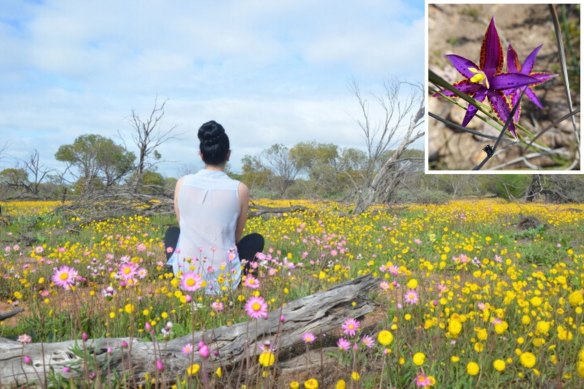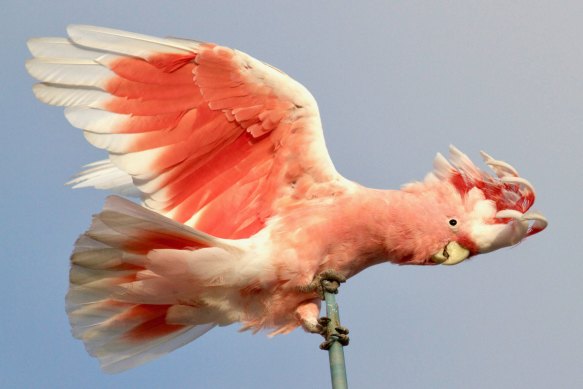This was published 8 months ago
Are our selfies killing WA’s best assets? Scientists say yes
The spectacular beauty and rarity of West Australian flora and fauna could contribute to its destruction, with scientists saying nature tourism and influencer culture are putting vulnerable species at risk.
New research released Friday reveals the desire to capture photos of rare specimens and post them online is leading to disrupted breeding and feeding patterns and trampling of endangered plant species.

Composite image: The everlasting season brings with it a rush of visitors to regional WA. INSET: Thelymitra porphyrosticta, Southern Queen of Sheba.Credit: Claire Ottaviano
While the impact of social media on humans is widely studied, this paper – compiled by some of Australia’s leading environmental scientists at the Kings Park Science program and Edith Cowan, Curtin and Murdoch Universities – is a global first linking social media-driven site visitation with population decline.
The issue has become so dominant scientists are using cameras and volunteer patrols to guard critically endangered orchids such as the Thelymitra variegata, also known as the Queen of Sheba, says research lead and Edith Cowan School of Science senior lecturer Dr Robert Davis.
“We know for sure that the driver of the loss of at least one population was everyone knowing about it and going there to photograph it,” he said.
“There were elements of trampling, but also it alerted poachers, and they were dug up.
“We talk about Carnaby black-cockatoos being threatened, and there might be 50,000 of them; you’ve got 27 [specimens of one Queen of Sheba orchid species] left – this is pretty severe.”
While social media isn’t the sole perpetrator of species decline – land clearing is the biggest factor – Davis said thousands of people descending on a fragile area in a short period of time could have devastating consequences.
In May, hundreds of people walked on 2000-year-old microscopic ancient thrombolites at Lake Clifton after the location was tipped as one of the best places to see the Aurora Australis.
Other examples of West Australian natives under threat from nature-based tourism also include the numbat, a rare frog endemic in the south-west and even the iconic osprey.
In the case of the sunset frog, visitors walking off-track to find and photograph the threatened frogs and rare pitcher plants risk introducing diseases like the deadly frog-killing chytrid fungus.

The pink cockatoo is an attractive and sought after species that can be subject to illegal poaching of eggs and young if locations are shared.Credit: Rob Davis
Also in May, an osprey was found in Denham seriously injured with evidence it was struck by a drone.
“This wasn’t a problem when we were kids; now you’ve got this ability to have 10,000 people at a site within an hour,” Davis said.
“It’s a force we’ve never seen and how we handle it – I’m afraid it’s a million-dollar question.”
One of the ways to protect endangered species is with the careful leading of visitors to “high interactive sites” while keeping locations of endangered and critically endangered species secret.
But the key to that approach succeeding depends on the conduct of the public and online flora and fauna enthusiast groups.
Another suggestion, more specifically for flowers, is for the public to post photos of rare species after the flowering season, which takes away the demand but still allows for online sharing.
The paper’s contributors advocate for the creation of codes of ethics and tighter controls around the use and promotion of flora and fauna on social media, as well as a framework that considers species most at risk from social media.
“What we really hope is that this paper is just the beginning,” Davis said.
“It’s a call to arms for people to undertake more research in this space.
“We want to put it out there that this should be front and centre because it’s clearly not going to get better, it’s going to get worse over time.”
Liked to death: the impacts of social media and photography on biodiversity